Heads and tails: Heavenly Dragon Lion Dance brings tradition to life at CelebrASIA Austin
Giant, furry heads buck and roll, and long bodies slither across the floor behind them. Logically, you know that the colorful creatures in front of you aren’t creatures at all. They’re dancers in elaborate disguise. But as these lions keep time to drum beats, fantasy becomes real. That’s the magic of Austin’s Heavenly Dragon Lion Dance Association.
The art form known as lion dance has transfixed Houston native Kevin Gian since he was a kid. The association’s founder and director, who’s also a University of Texas alum and a pharmacist, danced with several groups over the years.
Lion dance dates back centuries, with versions all over Asia. Gian tells us an origin legend about an ancient village in China plagued by a malevolent beast. One year, a celestial being came down to protect them. Inspired by the being, the villagers donned fantastic disguises, set off firecrackers and danced around to ward off future attacks.
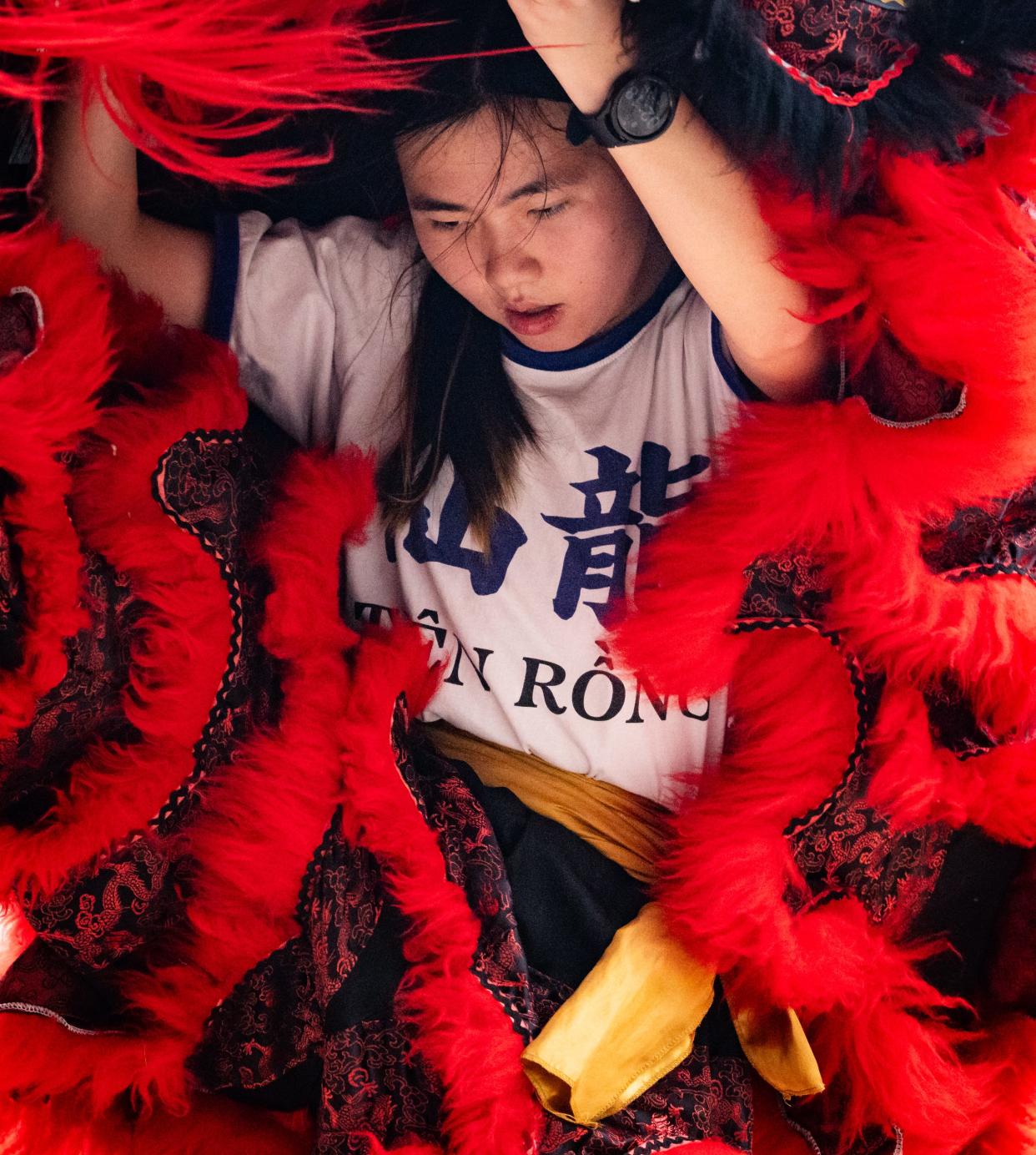
In 2021, Gian started Heavenly Dragon Lion Dance Association to help keep this beloved cultural tradition alive. The group will perform at 1 p.m. on Saturday at CelebrASIA Austin, the Asian American Resource Center’s annual party for Asian American and Pacific Islander Month.
Heavenly Dragon has about 20 members, mostly young people. Every member learns every role in the dance. Gian says that lion dance is traditionally male-dominated, but girls make up about two-thirds of his troupe.
“Typically when you see a lion dance team, it's mostly going to be Asian people doing it, because that's a huge part of Asian culture,” Gian says. “But here in Austin, it's very diverse. We have a lot of non-Asian members.”
Lunar New Year marks Heavenly Lion’s busiest season, but they practice year-round. In the off-season, they perform all over the place: at grand openings for boba shops and nail salons, at weddings and even at a gender reveal party earlier this year.
Before Heavenly Dragon’s performance at CelebrASIA Austin, we caught up with Gian to learn more about the ins and outs of lion dance. This interview has been edited for length and clarity.
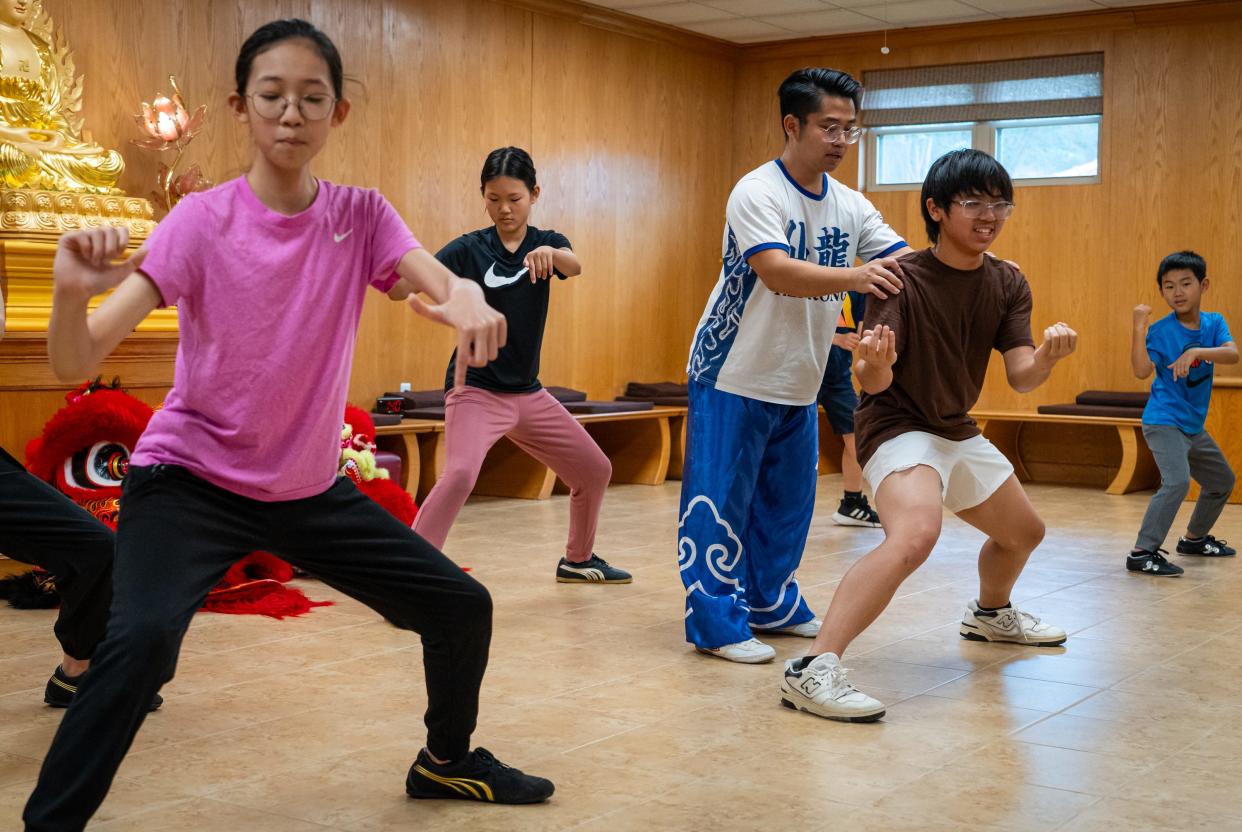
American-Statesman: Tell us about your history with the art of lion dance.
Kevin Gian: A big part of my childhood growing up was Lunar New Year. It's kind of like Thanksgiving, plus Christmas, plus the New Year's holiday. The most exciting part about the Lunar New Year was the lion dancing. We would go watch lion dance performances every single year. I joined a team in Houston, and that's where I started learning about the art.
What are the basics of lion dancing, for newbies?
Every lion dance has two parts: music and dancing. For the music part, there's a drummer, and then there's a gong player, typically. Then there's a couple cymbals.
There are different styles of lion dancing, depending on the geographical location, and a lot of them are tied to kung fu styles, as well. You can categorize them based on (region), like Chinese-style lion dancing, Malaysian style, Vietnamese style, as well. Then there's also modern versus traditional styles. Every single style has their own way of playing the music and (performing) the dancing aspects.
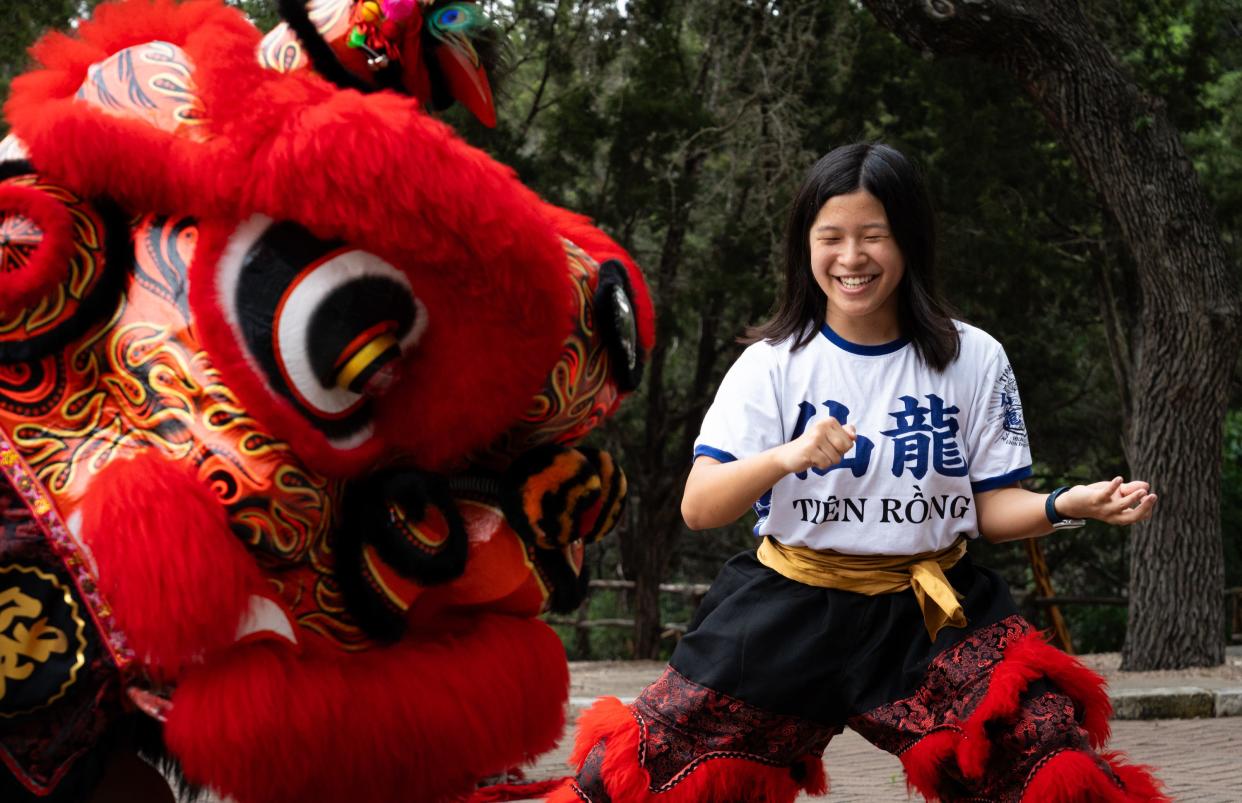
What’s the difference between modern and traditional styles?
In modern style, the costumes are very colorful and look really cute. The movements are very nimble and catlike, and very cute and approachable.
In the traditional style, it's not going to look as cute. It's going to look a little bit more aggressive. The paint strokes on the lion are going to be a lot more mean looking. It's more tied to traditional kung fu. There are stronger, lower stances.
Regardless of the style, the purpose is to scare away evil spirits, bringing good luck.
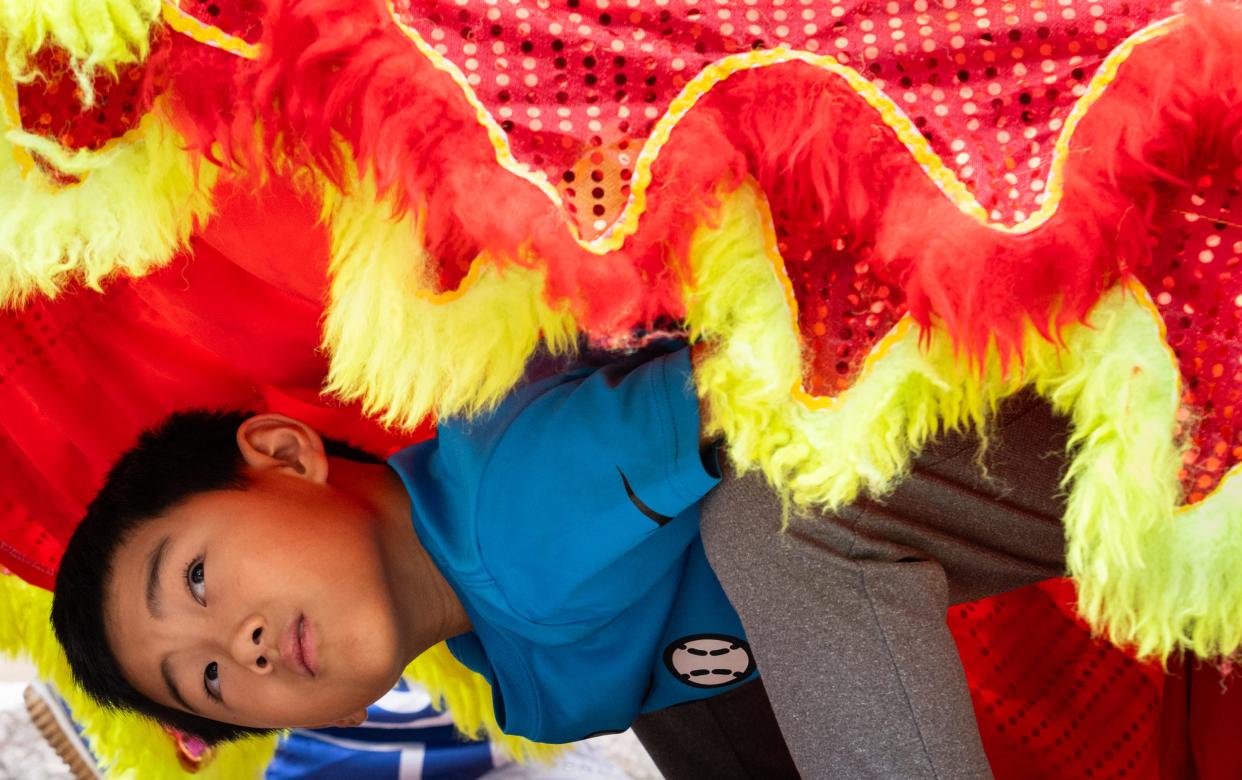
How do the dancers operate the lion?
There’s a head player and a tail player. The lion will usually be composed of a bamboo frame, or a rattan frame. Then there's papier-mâché — basically like a big ol’ piñata. There’s paper over it, and everything's hand painted. After that's done, they glue the fur over the lion. That's going to compose the head.
Then attached to the head is basically a long blanket, but it serves as a tail, or the body of the lion. Depending on the team or the troupe, they might wear uniform pants or lion pants. The lion pants will have the same patterns and colors as the rest of the body.
The head player is responsible for controlling the physical (movements) inside the head frame. We have a lot of strings and moving parts inside the lion head that you can use to maneuver the mouth, which you can open and close. There’s a string you can pull to maneuver the eyes and the ears, as well. The dancer can angle it a certain way to convey different types of emotions,
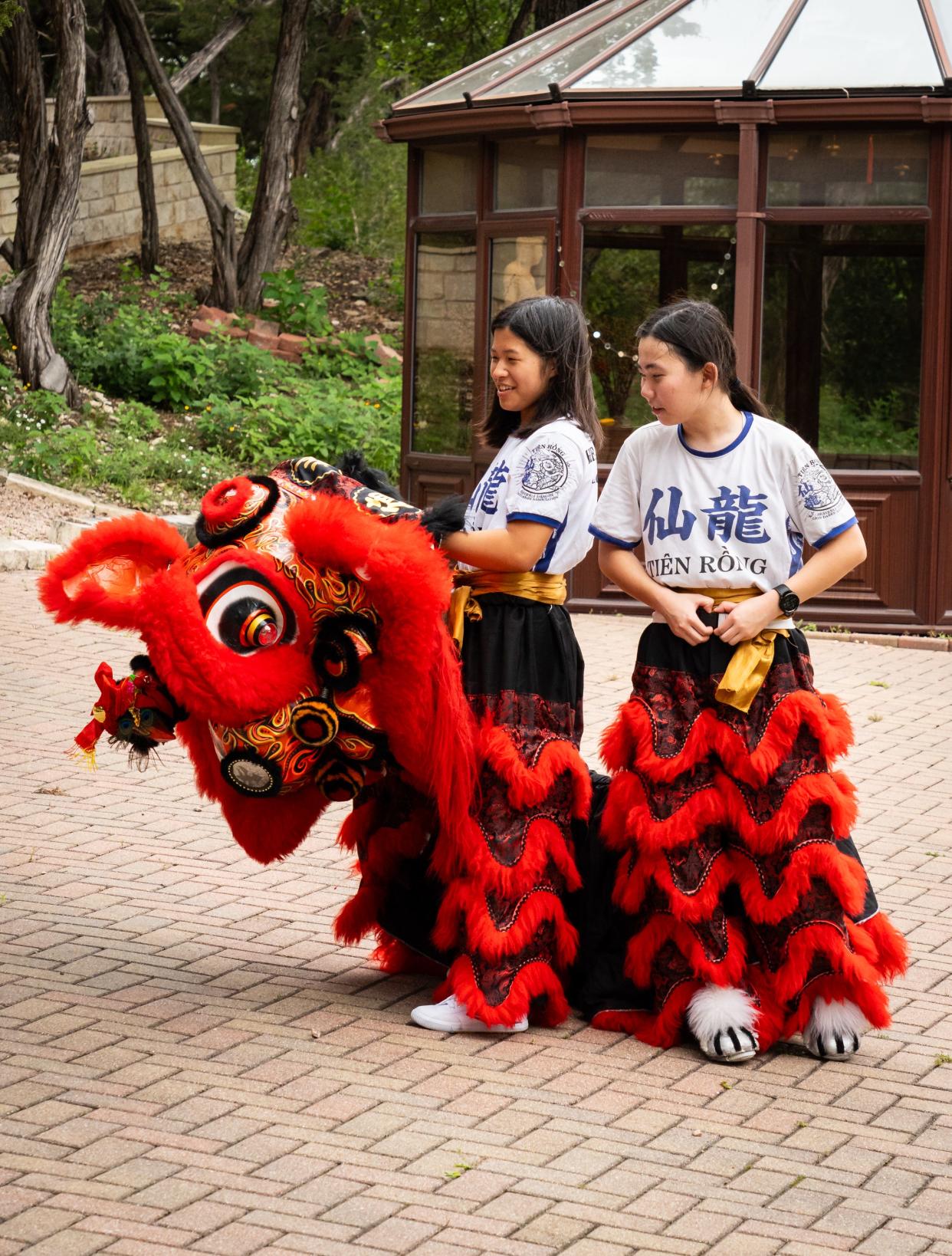
Then the tail player also has a very important role, to bend forward in a way where it creates the shape of the lion. They're also involved in more advanced techniques, where they may have to lift the head player.
What distinguishes Heavenly Dragon Lion Dance Association’s style of performance?
The style that I do is called the Hong Kong style of lion dance. It's very hard to teach and very hard to learn. The Hong Kong style, I'd say, is a pretty good mix of traditional elements and modern elements. It takes inspiration from both styles equally. The movements and the head styles are more traditional, and then they do incorporate some of the modern elements, like some of the stunts.
The music is also very important for this style. The drum has very fast and complex combinations. The cymbals, they play super fast and super loud, as well. The tempo, and then the energy, it kind of ties together with the energetic movements of the lion.
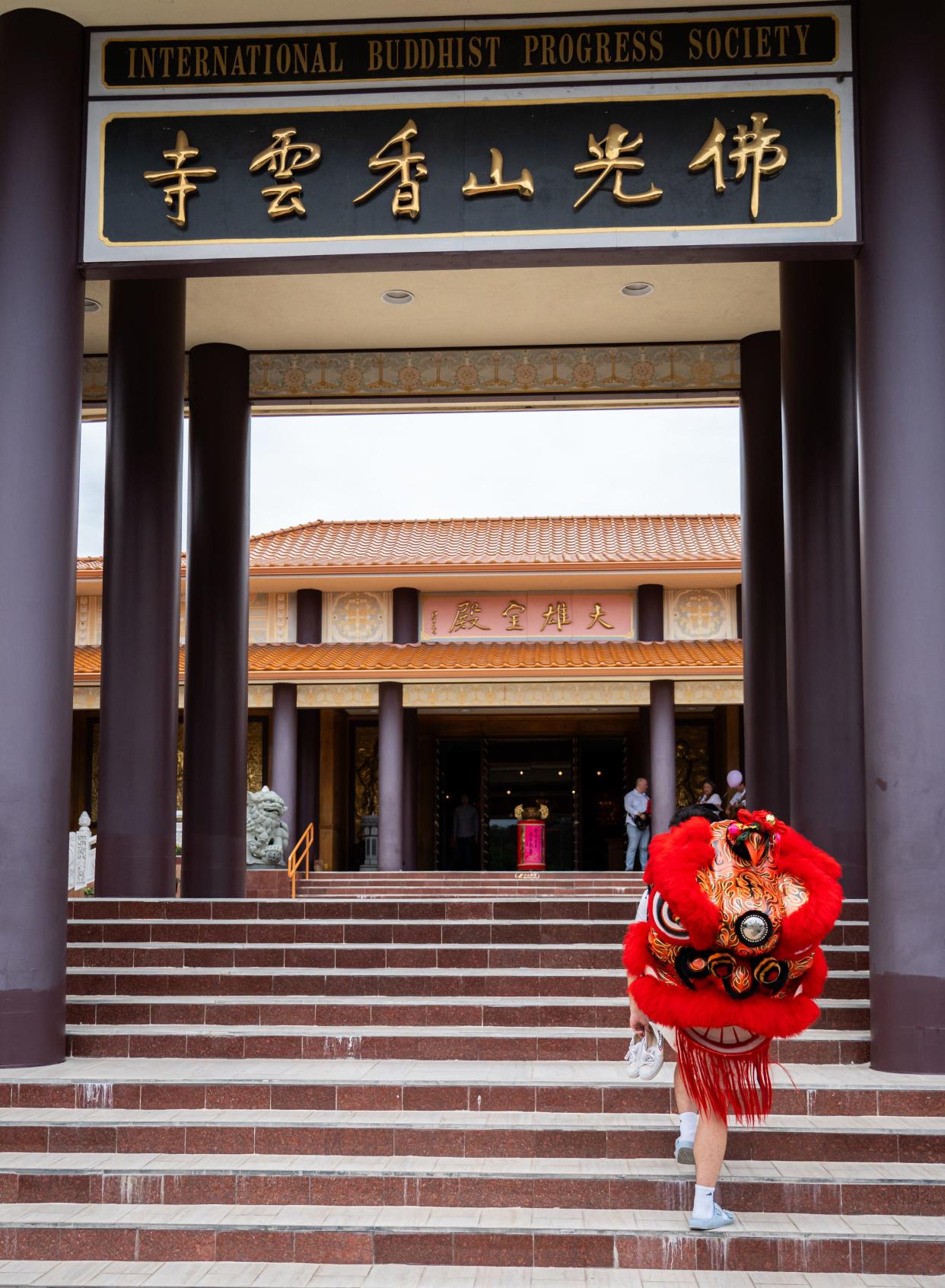
What does it mean to you to perform at events like CelebrASIA Austin?
It makes me feel really, really happy that I'm able to share my art form. It feels like I'm doing my duty to pass on the torch when it comes to performing, and also teaching my members how to perform, as well as the cultural significance of it.
The next level is to be able to share this art form with the general population here in Austin. Some people may have some exposure or some experiences with lion dancing in the audience. But a lot of people are still lacking some of that cultural knowledge.
It's a big honor for me to be able to share this part of my culture and heritage with the rest of the community, whether they're Asian or non-Asian.
Eric Webb is an award-winning culture writer based in Austin. Find him at www.ericwebb.me.
IF YOU GO: CelebrASIA Austin 2024
When: 11 a.m. to 3 p.m. Saturday, May 18
Where: Asian American Resource Center, 8401 Cameron Road
Cost: Free
More information: To see a full lineup of performers, activities and food vendors at CelebrASIA Austin, as well as find parking information, go to austintexas.gov/event/celebrasia-austin-2024. To find out more about Heavenly Dragon Lion Dance Association, go to heavenlydragonliondance.com.
This article originally appeared on Austin American-Statesman: Austin celebrates Asian American communities at CelebrASIA on Saturday
